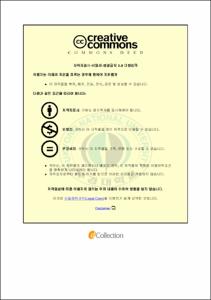초등 영어 교과서 문화요소 분석
- Abstract
- An Analysis of Cultural Elements in Elementary School
English Textbooks
Jung Sook Choi
Graduate School of Education
Pukyong National University
Abstract
The purpose of this study is to analyze the cultural elements in the 3rd and 4th grader's textbooks that are used from 2011 in the elementary school. For the analysis, 5 kind books are chosen and they are analyzed by three categories.
The three categories are as followings:
First, how much are the learning contents and the cultural elements of the culture sections in the textbooks related?
Second, how are the textbooks composed?
Third, what cultural elements are in each culture section?
Last, which countries and areas are used in each culture section of the textbooks?
The results of the study are as follows:
First, most textbooks close relationship between learning contents and the cultural elements in each lesson. The rate of relationship is from 100% to 58%. The rates differ by publisher.
Second, the cultural elements, as analysed by Moran(2001), are products, practices, perspectives, communities and persons. According to the results, each book focuses 90% on only three of five elements: products, practices, perspectives.
Last, it is divided into two regions, classified as main regions, and the other regions. Main regions are classified by ,Asian areas, and British/American areas that use English, and the other regions are Europe and others. According to the results, Asian areas are used 53%, British/American ares 33.5% and Europe and others are 14.5% in main regions. In the other regions, Europe and other areas are used 61.8%, Asian areas 20.3% and British /American areas are 17.9%. In these results, we could recognize that there are lots of countries and areas are used in the textbooks. It is good to study various cultural elements but it might be confusing to the learners.
In conclusion, culture and language are inseparable, so when we teach and learn other languages, we need to understand the culture of the target countries. Without understanding the culture of other countries, it is hard to learn other languages properly.
When we teach English and culture at the same time, we could expect better results of English study than without culture study.
- Issued Date
- 2012
- Awarded Date
- 2012. 2
- Type
- Dissertation
- Publisher
- 부경대학교 교육대학원
- Department
- 교육대학원 초등영어교육전공
- Advisor
- 오준일
- Table Of Contents
- 목 차
Ⅰ 서론 ······················································· 1
1. 연구의 필요성 및 목적 ····························· 1
2. 연구질문 ·············································· 3
3. 연구의 제한점 ········································ 4
Ⅱ 이론적 배경 ·············································· 5
1. 문화의 개념 ·········································· 5
2. 문화와 언어와의 관계 ······························· 9
3. 초등학교 영어 교육과 문화 교육 ················ 14
4. 선행연구 ··············································17
Ⅲ 연구 방법 ················································19
1. 연구 대상 ·············································19
2. 분석 기준 ·············································22
3. 자료 수집 및 분석 방법 ····························25
Ⅳ. 연구 결과 ·················································28
1. 단원별 문화소재와 문화 란의 문화소재 연계성
분석 ···················································28
2. 문화 소재 비교 분석 ································29
3. 국가, 지역별 사용 빈도수 및 비율 분석··········38
Ⅴ. 결론 ························································53
참고문헌 ·······················································56
- Degree
- Master
- Files in This Item:
-
-
Download
 초등 영어 교과서 문화요소 분석.pdf
기타 데이터 / 853.02 kB / Adobe PDF
초등 영어 교과서 문화요소 분석.pdf
기타 데이터 / 853.02 kB / Adobe PDF
-
Items in Repository are protected by copyright, with all rights reserved, unless otherwise indicated.